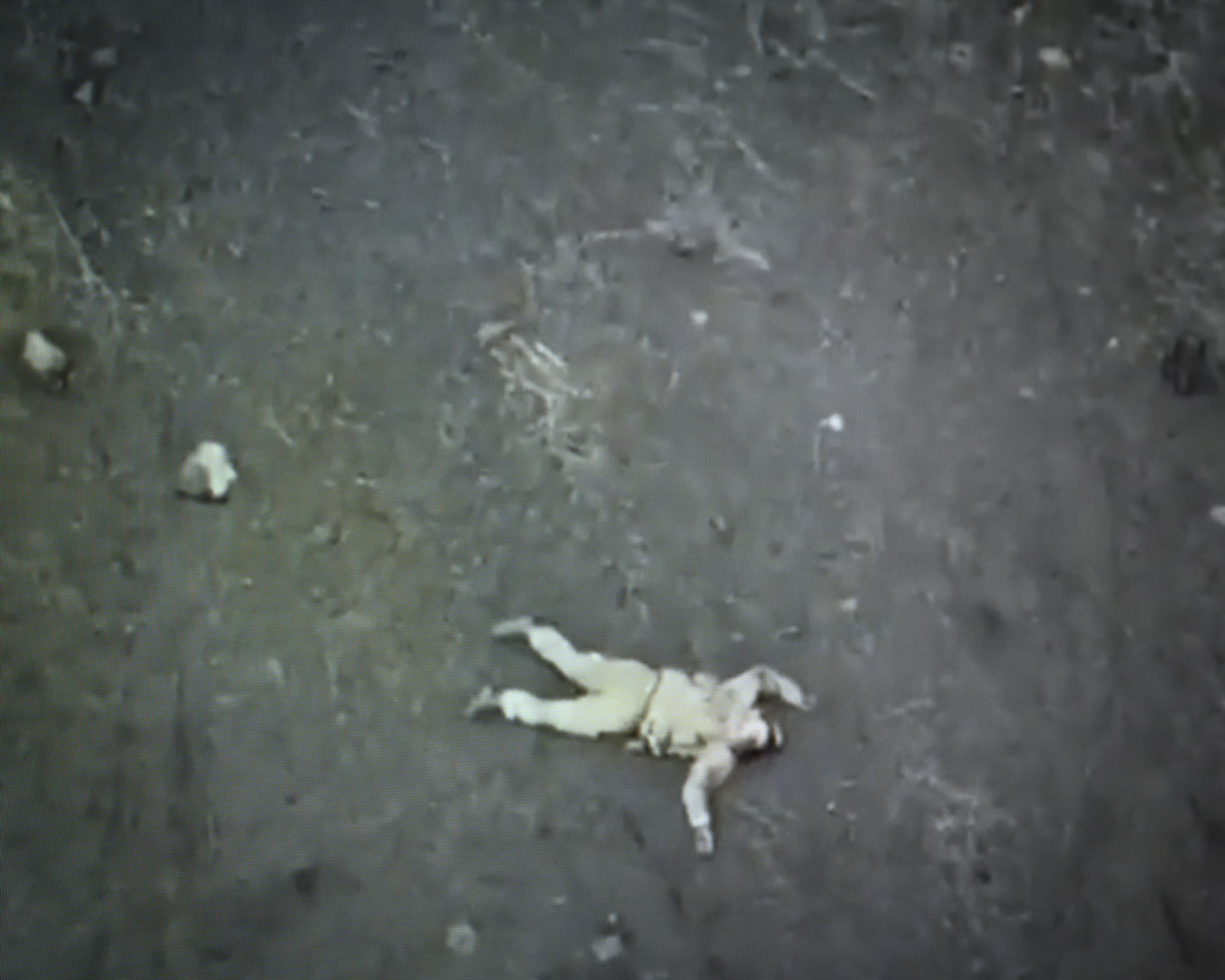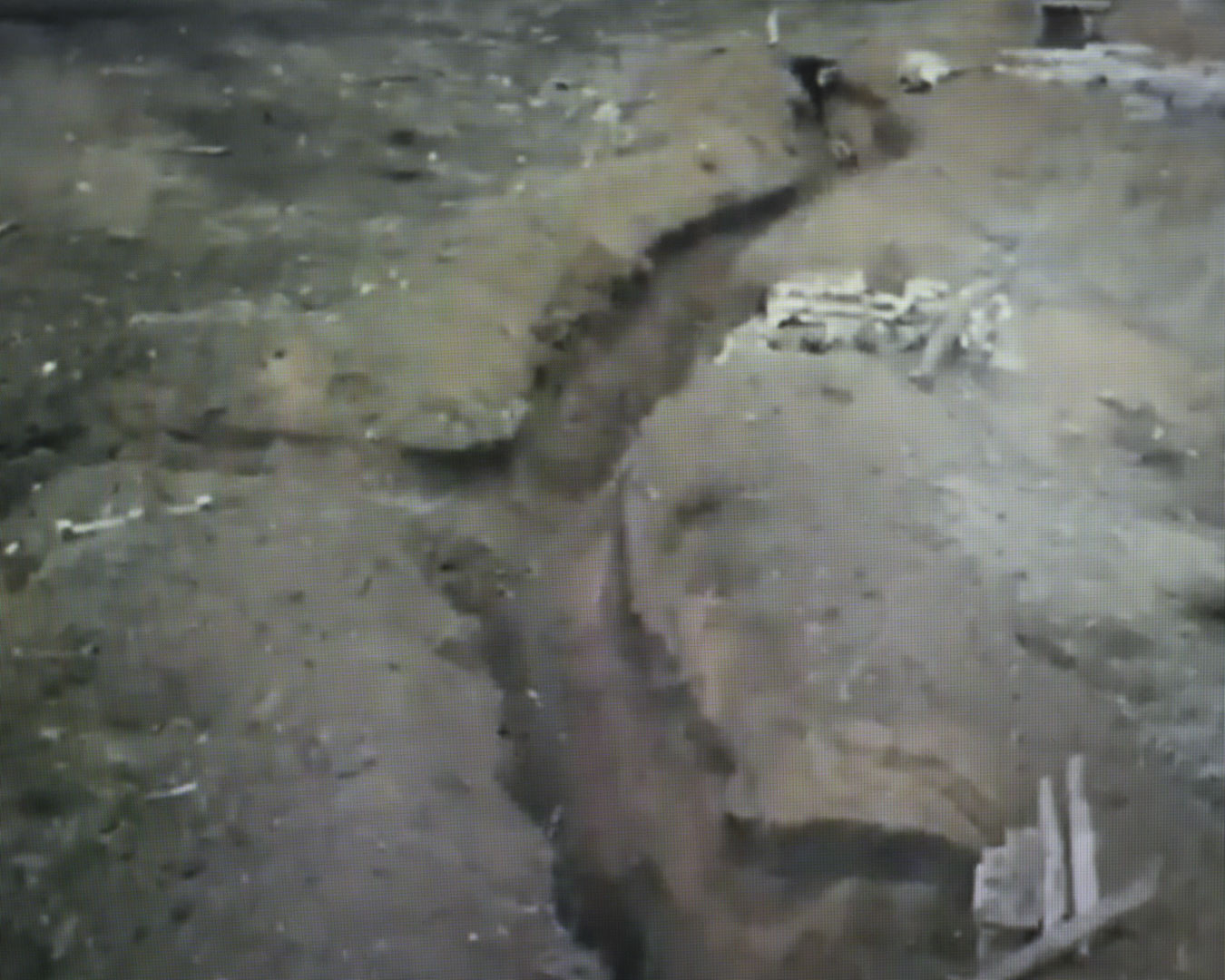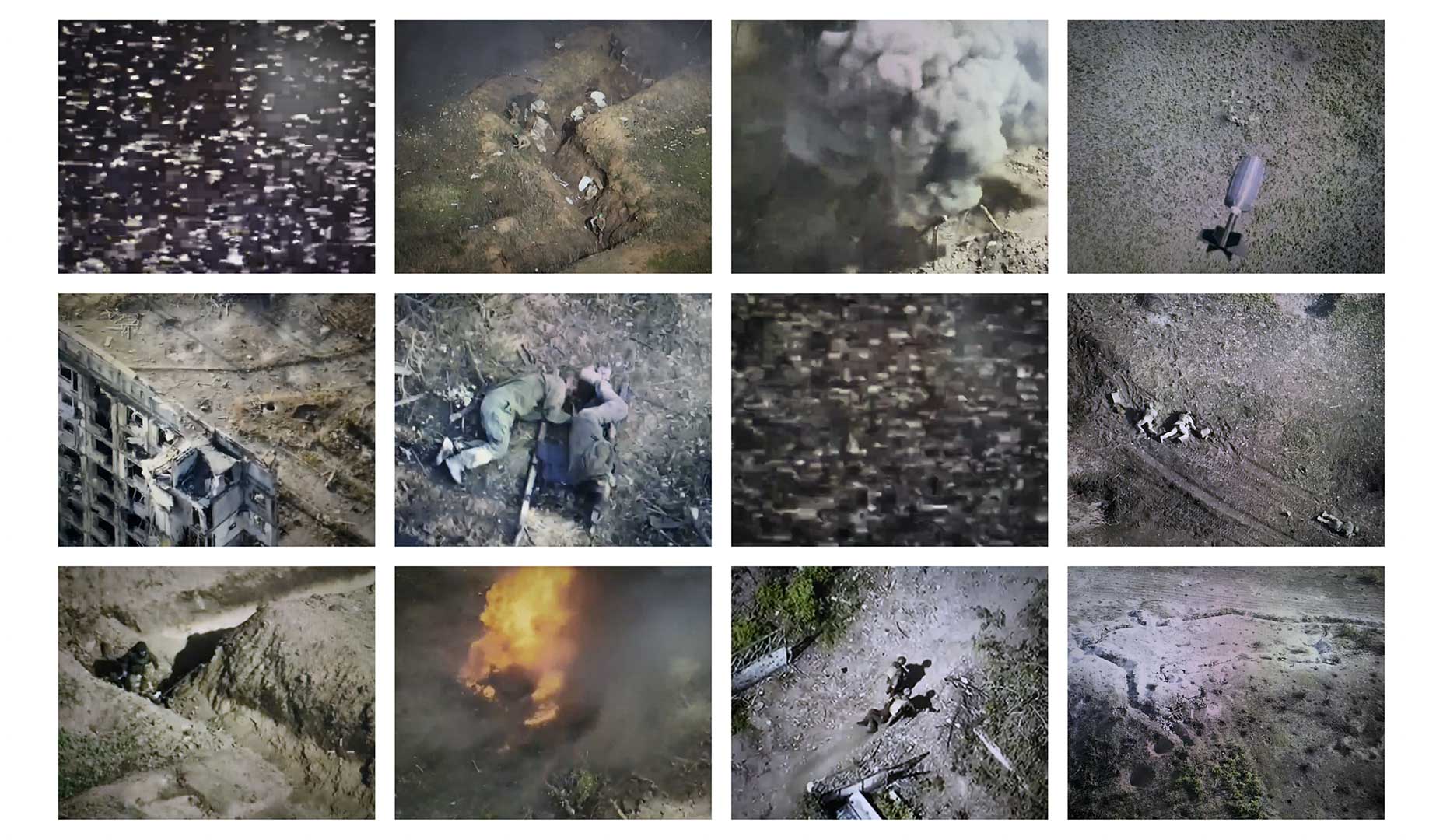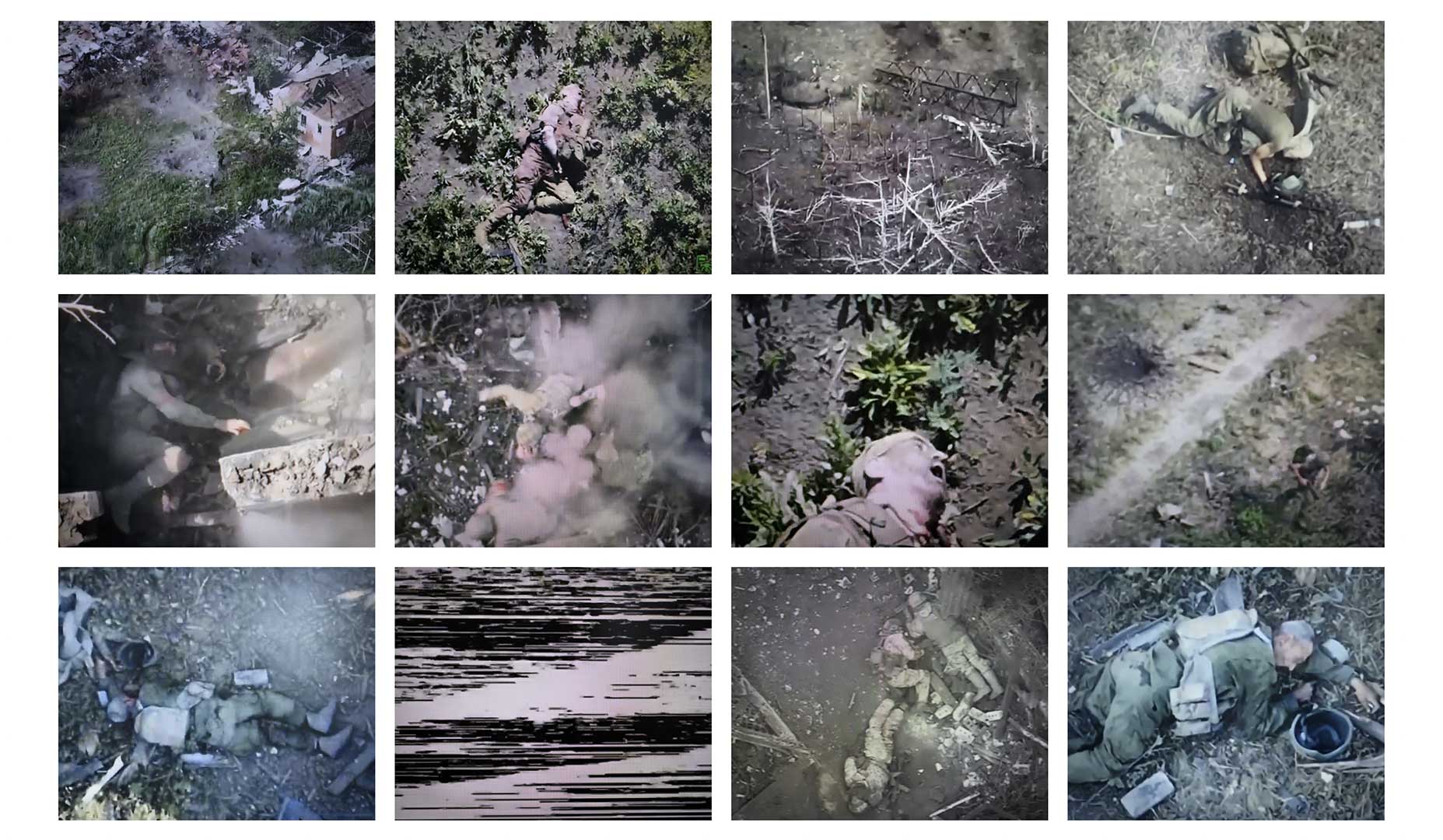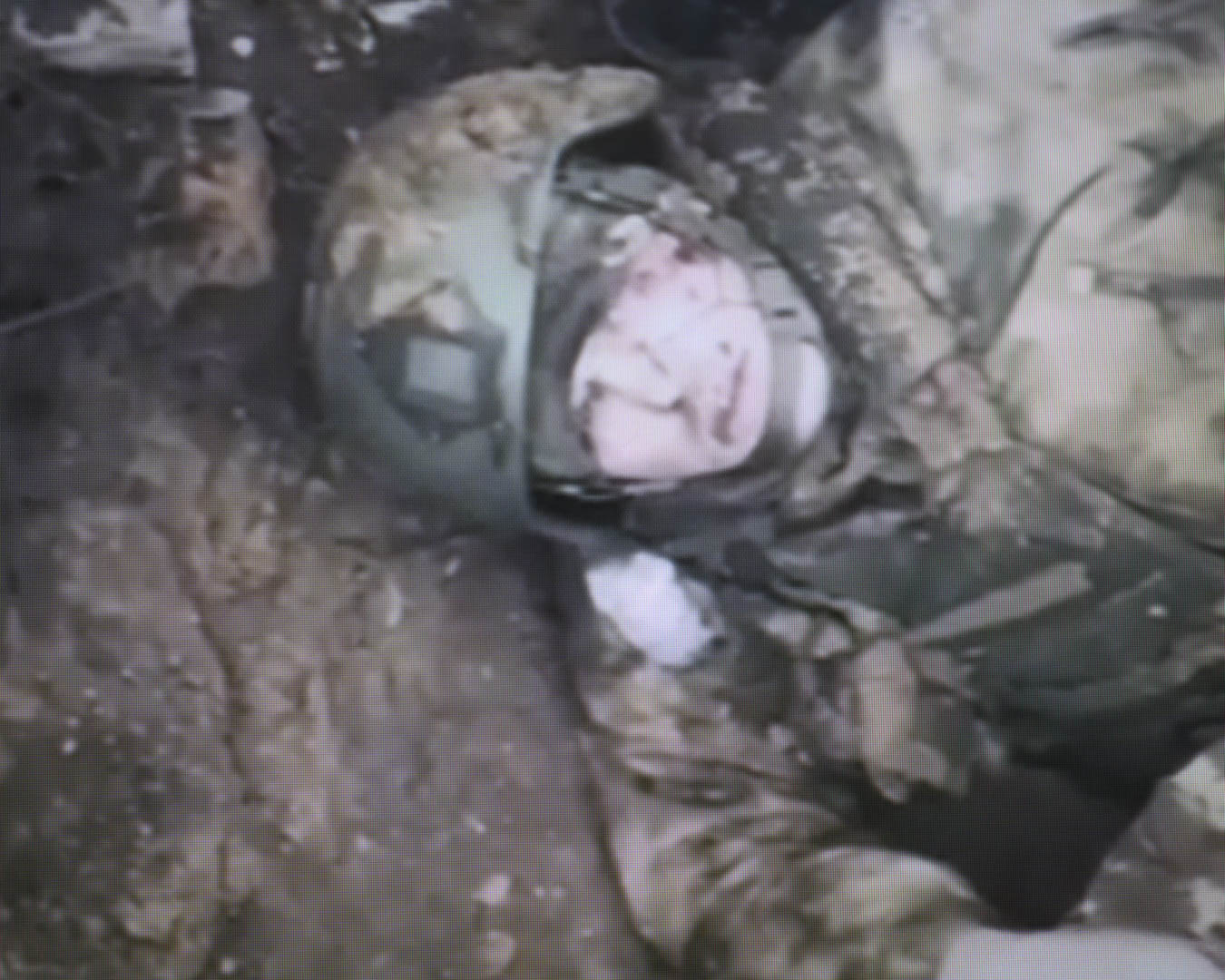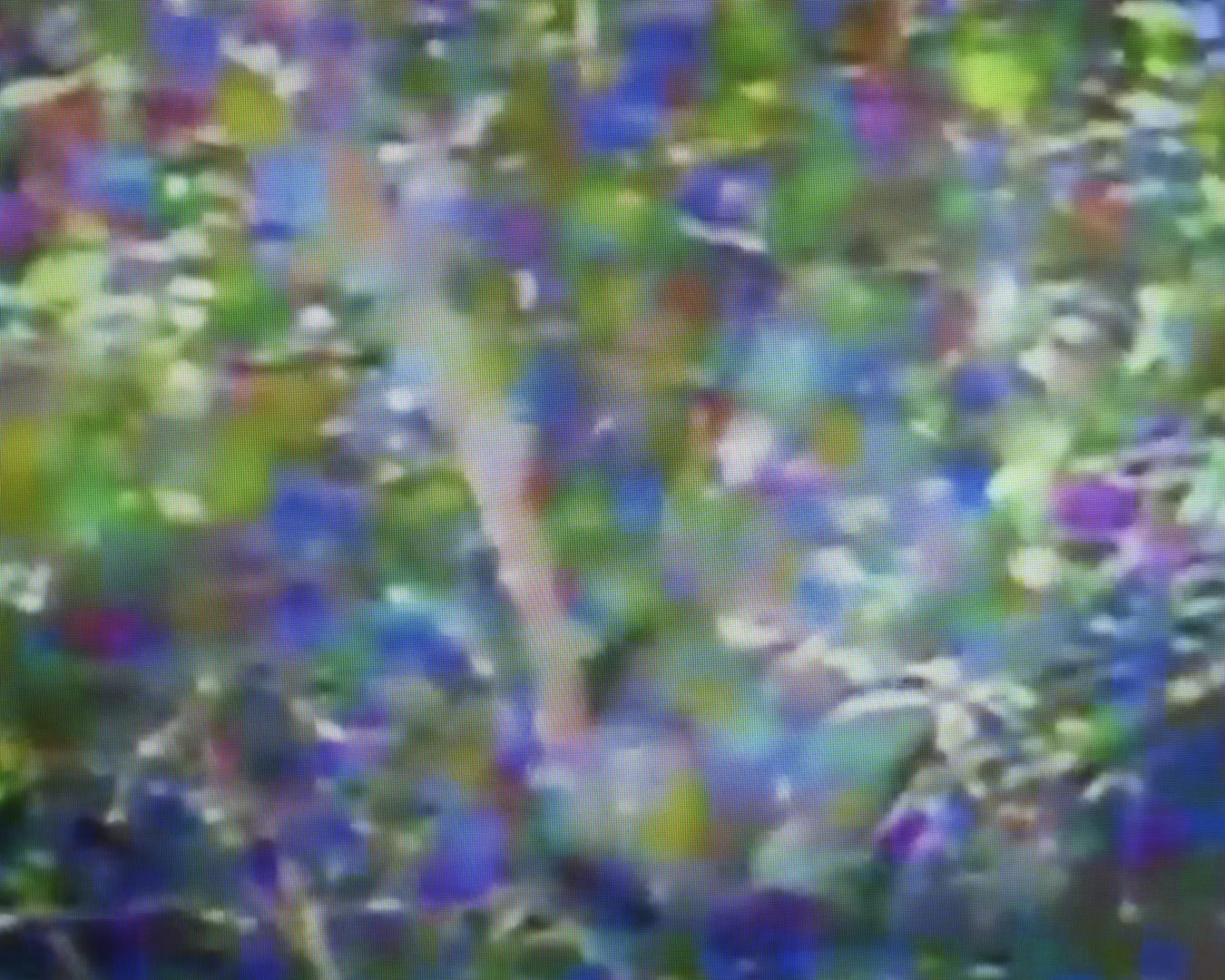Watching and Killing, 2024
This series of images brings together screen photographs, representing a detail of video produced by drones transformed to drop bombs and grenades on Russian troops and used by the Ukrainian army on the front line.
The video clips from which they are taken are broadcast on social networks and messenger loops, where the photographer found, selected, edited and photographed them, deliberately choosing the framing.
Sometimes we can make out traces of an explosion or the ruins of a building, the horizon is rarely visible as the lens often points to the ground. Silhouettes are recognizable: soldiers on a front line. Information such as the date and location of the shot tells us that this is the war in Ukraine.
The Russian invasion of the Ukraine quickly turned into an all-out war in the heart of Europe. Faced with an opposing army with far more men and equipment, Ukraine had to adapt and find new ways of fighting.
Its shortcomings, particularly in the air force, led the Ukrainian army to make do with the limited resources available and develop attacks using simple drones, initially designed for the general public and equipped with a camera. These “FPV” drones are kamikaze drones that carry grenades or rockets and carry out highly targeted attacks on Russian military positions and soldiers.
On both sides of the front line, these machines have become a major issue, so much so that military vehicles have been equipped with drone jammers for several months now.
With this series, Guillaume Herbaut questions the changing and shifting status of these images: capturing the state of the frontline, they are a mine of information both for the drone operators who use them at the heart of the battle, and for the public who would never have been able to approach the theater of operations so closely.
Finally, like all war footage, it is then used behind the frontline for propaganda and disinformation purposes. Thus, each of these videos circulates abundantly from Telegram post to TikTok loops to galvanize support for the war effort.
The history of conflicts and their media treatment teaches us that, while technological evolutions are perfectly integrated into the evolution of warfare, similarities and echoes can be heard from one battlefield to another.
The First World War marked the entry of amateur photography into modern warfare, but also the arrival of aerial photography, enabling us to capture moments of combat for the first time, and to have a unique view of the battlefield. How can we fail to see a parallel with the current conflict?
In Ukraine today, drones are not only military, but also visual propaganda tools. The videos filmed by these drones capture unprecedented moments of war, where destruction and death are transmitted almost live, changing our relationship to war. This is true not only for soldiers in the field, but also for those who, from a distance, witness these events transmitted via social networks.
This change raises questions about the place and role of the war reporter in the digital age, where these images circulate rapidly and shape public opinion instantaneously. How can we deal with these images, which capture the horror of live warfare, while maintaining a critical and ethical distance from this “spectacle” of violence?



